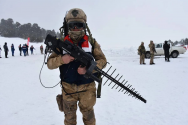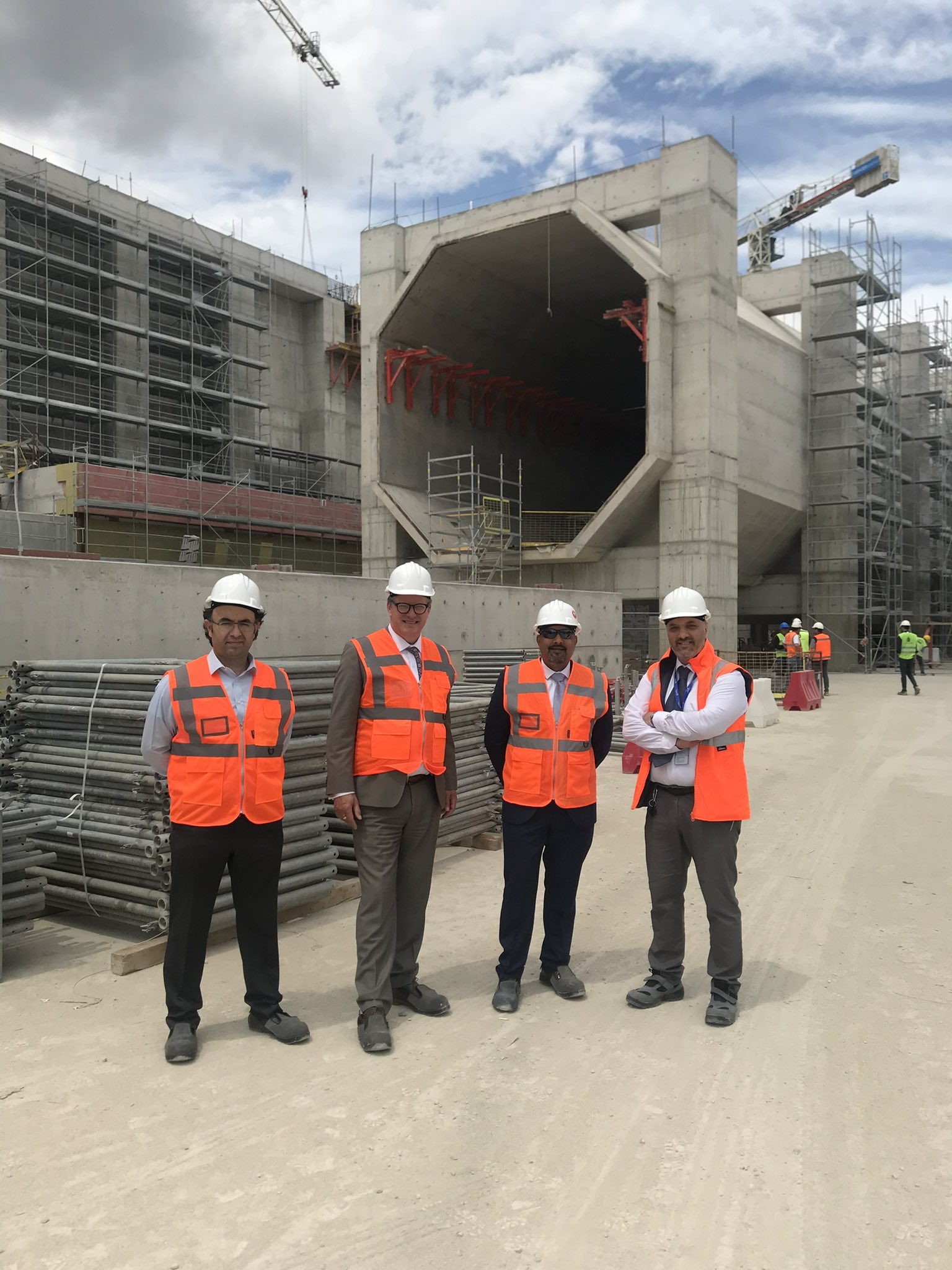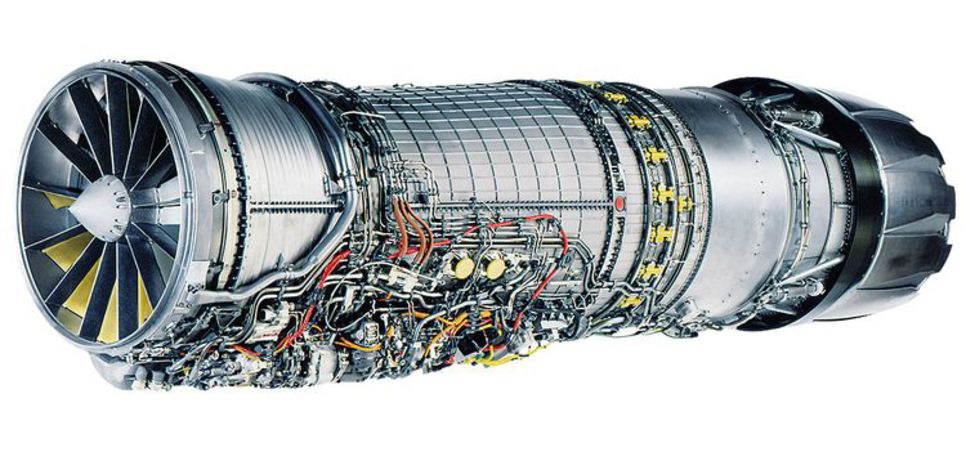Dearsan tests its new USV called 'Salvo':
You are using an out of date browser. It may not display this or other websites correctly.
You should upgrade or use an alternative browser.
You should upgrade or use an alternative browser.
Turkey Military News, Reports, Data, etc.
- Thread starter Jeff Head
- Start date
TS1400 getting pushed beyond the limits:

(...)
Akşit stated that these tests were carried out to prove the maturity of the engine for manned flight and for certification, and noted that the name was determined as TS1400 since the maximum power that the engine will continuously produce is 1400 horsepower.
Stating that they designed an engine that can produce 1470 horsepower during take-off, Akşit said:
"These values are about 100 hp higher than the competitor's current imported engine. We have increased our engine to 1570 hp, or even above it. There is an emergency take-off scenario in case it has to be overloaded for certification and qualification. Normally, the engine is designed at a maximum continuous power level of 1400 hp even though it can be run to produce 1570 horsepower for 2 minutes and we need to show it to the certification authority. As of now, we have exceeded this power level, and we can run it at 1570 horsepower for much longer periods, not 2 minutes. This is a nice turning point. We will push it. We will announce the developments as the tests are done."
(...)
________________________________________________________________________________________________________________________________________________
1570hp at more than 2 min is 6 hp more than the specs given by the CEO of TEI during an online presentation last year:
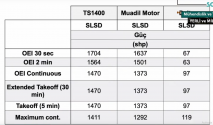

(...)
Akşit stated that these tests were carried out to prove the maturity of the engine for manned flight and for certification, and noted that the name was determined as TS1400 since the maximum power that the engine will continuously produce is 1400 horsepower.
Stating that they designed an engine that can produce 1470 horsepower during take-off, Akşit said:
"These values are about 100 hp higher than the competitor's current imported engine. We have increased our engine to 1570 hp, or even above it. There is an emergency take-off scenario in case it has to be overloaded for certification and qualification. Normally, the engine is designed at a maximum continuous power level of 1400 hp even though it can be run to produce 1570 horsepower for 2 minutes and we need to show it to the certification authority. As of now, we have exceeded this power level, and we can run it at 1570 horsepower for much longer periods, not 2 minutes. This is a nice turning point. We will push it. We will announce the developments as the tests are done."
(...)
________________________________________________________________________________________________________________________________________________
1570hp at more than 2 min is 6 hp more than the specs given by the CEO of TEI during an online presentation last year:

Defense Industry cooperation between Turkey and UAE is getting stronger
Two memorandums of understanding were signed at the meeting, which was held for the development of defense industry relations between the two countries. Memorandum of understanding on industrial cooperation between the Defense and Aerospace Manufacturers Association (SASAD) and its counterpart organization in the UAE, EDDC (Emirates Defense Companies Council), and between TR TEST and Tawazun on testing and certification, witnessed by SSB President Demir and TAWAZUN CEO Al Hosani signed.

Two memorandums of understanding were signed at the meeting, which was held for the development of defense industry relations between the two countries. Memorandum of understanding on industrial cooperation between the Defense and Aerospace Manufacturers Association (SASAD) and its counterpart organization in the UAE, EDDC (Emirates Defense Companies Council), and between TR TEST and Tawazun on testing and certification, witnessed by SSB President Demir and TAWAZUN CEO Al Hosani signed.

Baykar TB2 annual production is at 200!
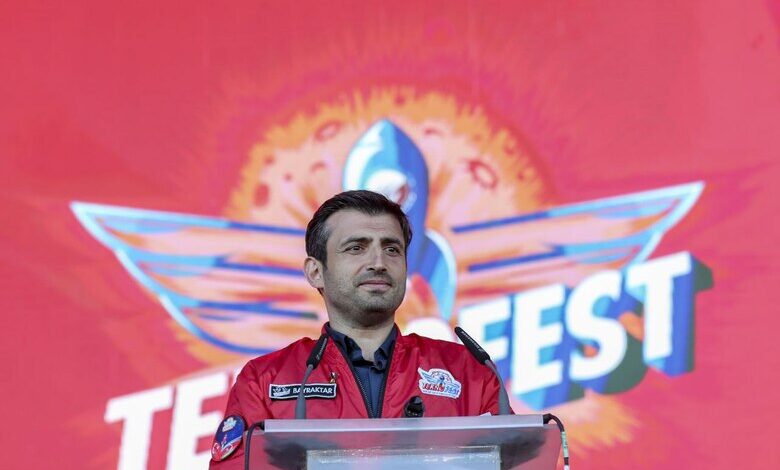
Making a special statement to the British news agency Reuters, Selçuk Bayraktar stated that after the success in Ukraine, Bayraktar TB2 SİHAs found customers all over the world. Bayraktar stated that Turkish-made SİHAs have led to revolutions in the modern war environment and said: “Bayraktar TB2 does what it is supposed to do, neutralizing the most advanced air defense systems, advanced artillery systems and armored vehicles. The whole world is now a customer to us.”
According to Selçuk Bayraktar, Baykar has reached the capacity to produce 200 Bayraktar TB2s per year. According to the data announced by Bayraktar, Baykar has the capacity to produce up to 16 Bayraktar TB2 SİHAs every month. This corresponds to 4 Bayraktar TB2s per week.
Noting that he is proud of the use of TB2s in the Karabakh War, Bayraktar emphasizes that Russia's occupation of Ukraine is "illegal" and that TB2 SİHAs "help the honorable Ukrainian people defend themselves". “The illegal occupation of Karabakh has been like a heartache since our youth. And as the engineers who develop the technology, it is our honor to help our brothers here reclaim their land.
Replying to Russia's claim that "TB2s were shot down with laser systems" in recent weeks, Bayraktar states that these systems are ineffective against TB2. “They have limited range, so if your sensor and ammo range are longer, they won't be effective.”
Stating that Baykar continues to work on Bayraktar TB3 and Unmanned Combat Aircraft (MIUS), which can take off and land from short runways with foldable wings, Bayraktar said that KIZILELMA will make its first flight next year. “Hopefully we will see the first flight of KIZILEMA next year. The first flight of TB3 will be either at the end of this year or at the beginning of next year.” “If you look at the longer time horizon, we are working on taxi UAVs. For this, we need to develop a higher level of autonomous technology. This basically means artificial intelligence. But it will revolutionize how people are transported in cities.”

Making a special statement to the British news agency Reuters, Selçuk Bayraktar stated that after the success in Ukraine, Bayraktar TB2 SİHAs found customers all over the world. Bayraktar stated that Turkish-made SİHAs have led to revolutions in the modern war environment and said: “Bayraktar TB2 does what it is supposed to do, neutralizing the most advanced air defense systems, advanced artillery systems and armored vehicles. The whole world is now a customer to us.”
According to Selçuk Bayraktar, Baykar has reached the capacity to produce 200 Bayraktar TB2s per year. According to the data announced by Bayraktar, Baykar has the capacity to produce up to 16 Bayraktar TB2 SİHAs every month. This corresponds to 4 Bayraktar TB2s per week.
Noting that he is proud of the use of TB2s in the Karabakh War, Bayraktar emphasizes that Russia's occupation of Ukraine is "illegal" and that TB2 SİHAs "help the honorable Ukrainian people defend themselves". “The illegal occupation of Karabakh has been like a heartache since our youth. And as the engineers who develop the technology, it is our honor to help our brothers here reclaim their land.
Replying to Russia's claim that "TB2s were shot down with laser systems" in recent weeks, Bayraktar states that these systems are ineffective against TB2. “They have limited range, so if your sensor and ammo range are longer, they won't be effective.”
Stating that Baykar continues to work on Bayraktar TB3 and Unmanned Combat Aircraft (MIUS), which can take off and land from short runways with foldable wings, Bayraktar said that KIZILELMA will make its first flight next year. “Hopefully we will see the first flight of KIZILEMA next year. The first flight of TB3 will be either at the end of this year or at the beginning of next year.” “If you look at the longer time horizon, we are working on taxi UAVs. For this, we need to develop a higher level of autonomous technology. This basically means artificial intelligence. But it will revolutionize how people are transported in cities.”
Very interesting interview with the CEO of TEI. You can turn on the subtitles.
As TEI he says that they did an internal study and they reached the conclusion that they can develop a 35000+ lb thrust turbofan engine with supercruise, IR suppression and TVC in 10 to 15 years. With foreign support, the development time can be shortened.
Also the 1570hp 2 min requirement of the TS1400 has been exceed to 30 minutes!
As TEI he says that they did an internal study and they reached the conclusion that they can develop a 35000+ lb thrust turbofan engine with supercruise, IR suppression and TVC in 10 to 15 years. With foreign support, the development time can be shortened.
Also the 1570hp 2 min requirement of the TS1400 has been exceed to 30 minutes!
Last edited:

